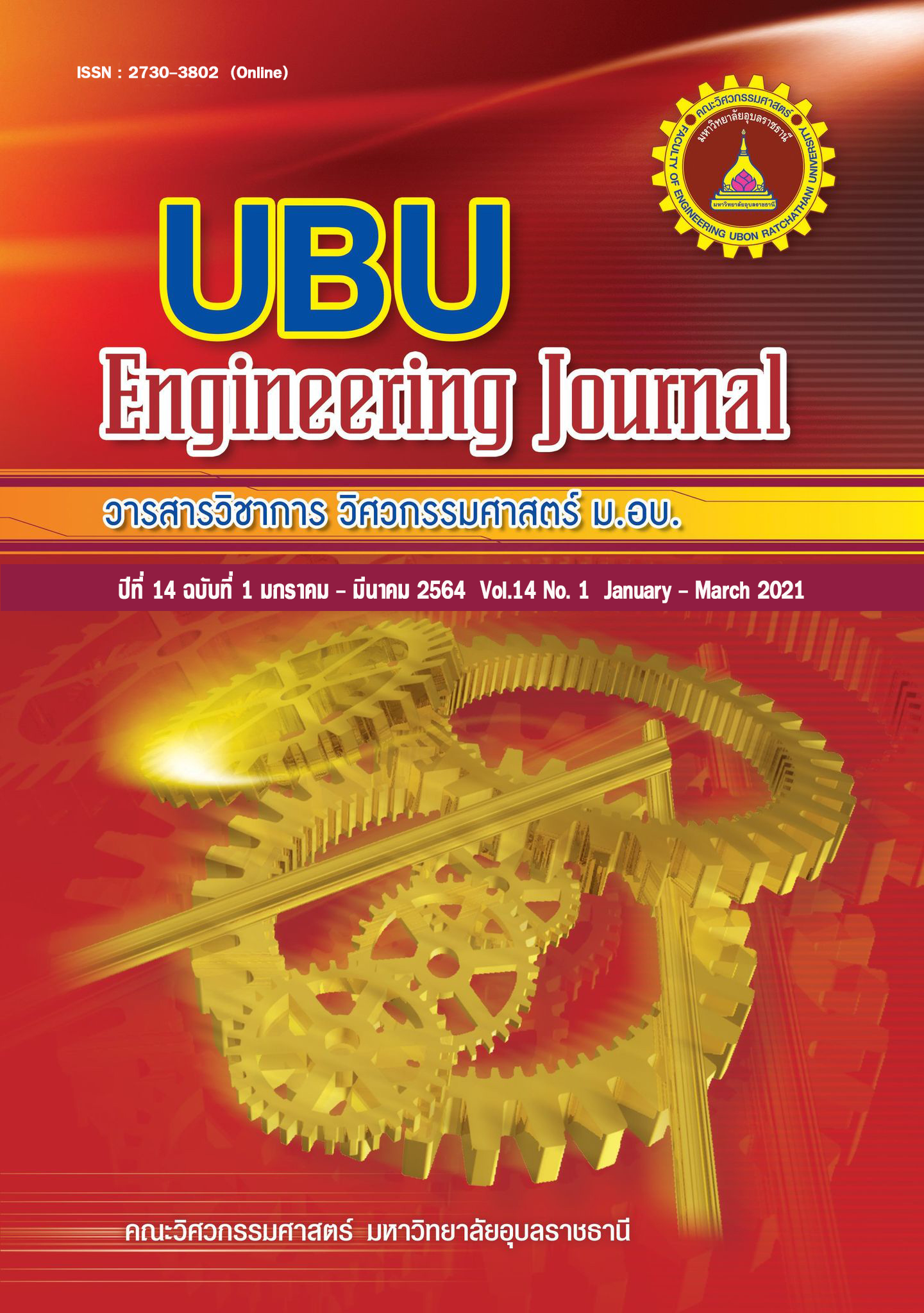Unit weight and compressive strength of water treatment sludge improved with sand and fly ash lightweight cellular geopolymer
Main Article Content
Abstract
This research investigates unit weight and compressive strength of water treatment sludge improved with sand and fly ash lightweight cellular geopolymer. The water treatment sludge (SL) was obtained from the Metropolitan Waterworks Authority of Thailand (MWA). Fly ash (FA) was collected from Mae Moh power plant of the Electricity Generating Authority of Thailand (EGAT) at Lampang Province. The fly ash : fine aggregate (SL and sand (SA)) ratio was fixed at 30:70, while the SL:SA ratios of 70:0, 60:10, 50:20, 40:30, 30:40, 20:50, 10:60 and 0:70 were investigated. Liquid alkaline activator (L) is a mixture of sodium hydroxide solution (NaOH) and sodium silicate solution (Na2SiO3) which is 30:70, 50:50 and 70:30, respectively. The NaOH concentration was 5 Molars. Foam content was 0, 1, 3 and 5 % by weight of FA. Test results show that the unit weight of SL improved with sand and fly ash lightweight cellular geopolymer varied with SL and SA ratios, L content and foam content. The unit weight of SL improved with sand and fly ash lightweight cellular geopolymer decreases with increasing in the SL content, L content and foam content. The compressive strength of sample increases with the increase of SA and L content. The maximum compressive strength of sample was found at SL:SA:FA of 0:70:30, NaOH:Na2SIO3 ratio of 30:70, L/B ratio of 0.95 and foam content of 1%, which gave the compressive strength of 12.8 MPa.
Article Details
References
[2] อุบลลักษณ์ รัตนศักดิ์. วัสดุจีโอโพลิเมอร์. กรุงเทพ: สมาคมคอนกรีตแห่งประเทศไทย; 2560.
[3] Horpibulsuk S, Suksiripattanapong C, Samingthong W, Chinkulkijniwat A, Rachan R, Arulrajah A. Durability against wet-dry cycles of water treatment sludge–fly ash geopolymer. Journal of Materials in Civil Engineering. 2015;28.
[4] Suksiripattanapong C, Horpibulsuk S, Boongrasan S, Udomchai A, Chinkulkijniwat A, Arulrajah A. Unit weight, strength and microstructure of a water treatment sludge–fly ash lightweight cellular geopolymer. Construction and Building Materials 2015;94:254-257.
[5] Suksiripattanapong C, Srijumpa S, Horpibulsuk S, Sukmak P, Arulrajah A, Du JY. Compressive strength of water treatment sludge–fly ash geopolymer at various compression energies. Lowland Technology International Journal. 2015;17:147-156.
[6] Sukmak P, Horpibulsuk S, Shen SL. Strength development in clay–fly ash geopolymer. Construction and Building Materials. 2013;40:566-574.
[7] Sukmak P, Horpibulsuk S, Shen SL, Chindaprasirt P, Suksiripattanpong C. Factors influencing strength development in clay-fly ash geopolymer. Construction and Building Materials. 2013;47:1125-1136.
[8] American Society for Testing and Material. ASTM C230/C230M-08 Standard Specification for Flow Table for Use in Tests of Hydraulic Cement. Annual Book of ASTM Standard 4.02 vols. Philadelphia; 2008.
[9] American Society for Testing and Material. ASTM C109/C109M-11a Standard Test Method for Compressive Strength of Hydraulic Cement Mortars (Using 2-in. or [50-mm] Cube Specimens. Annual Book of ASTM Standard 4.02 vols. Philadelphia; 2008.

